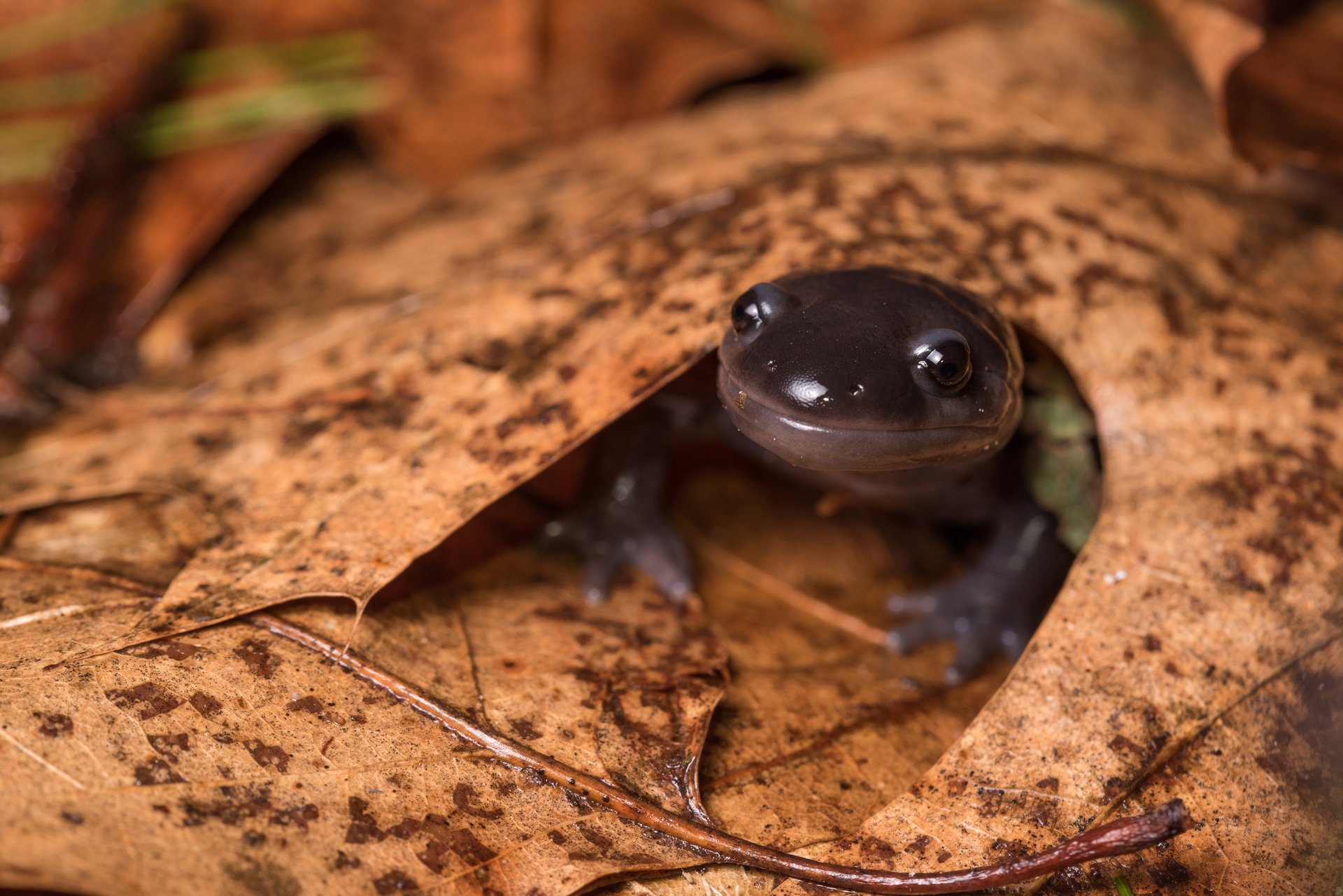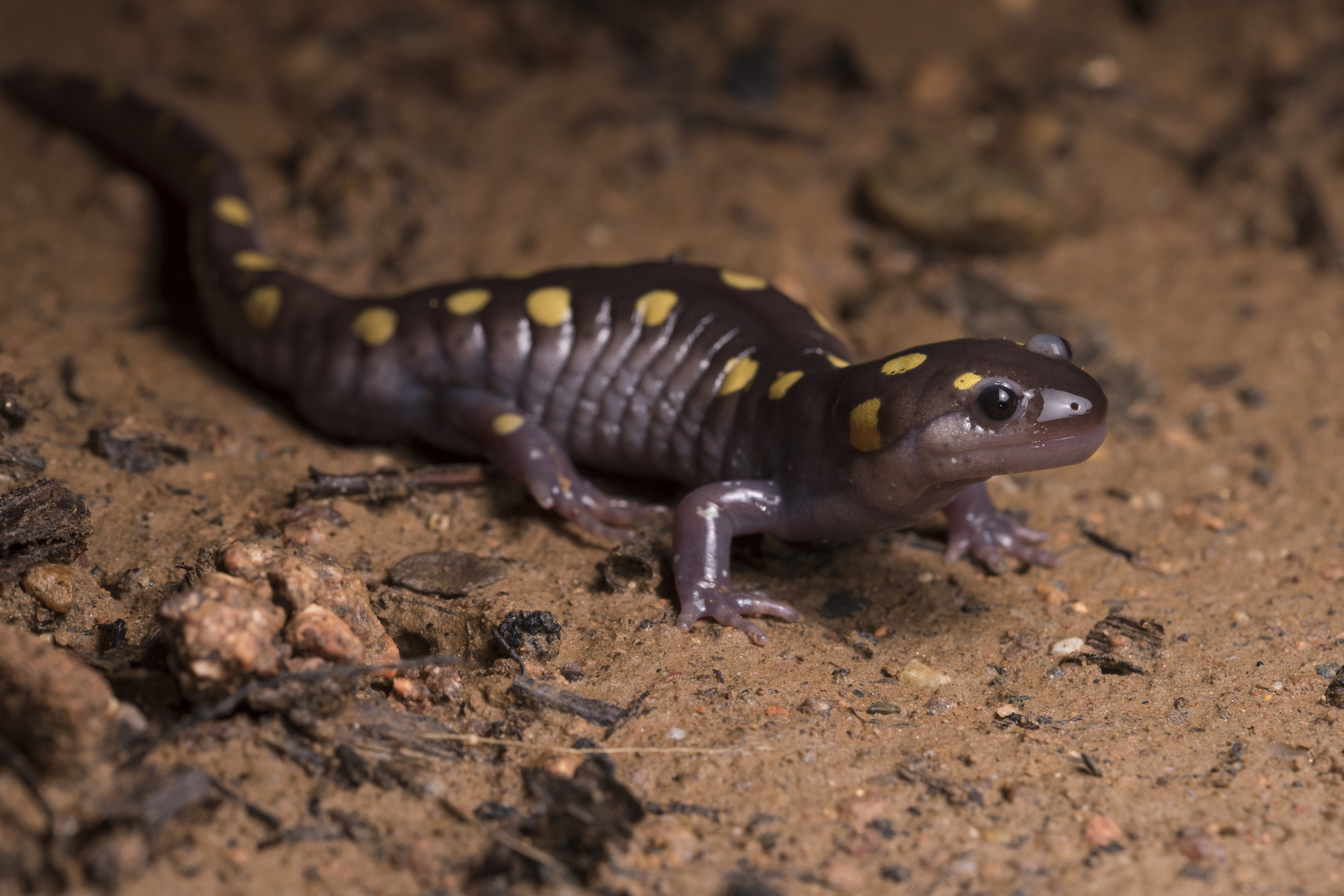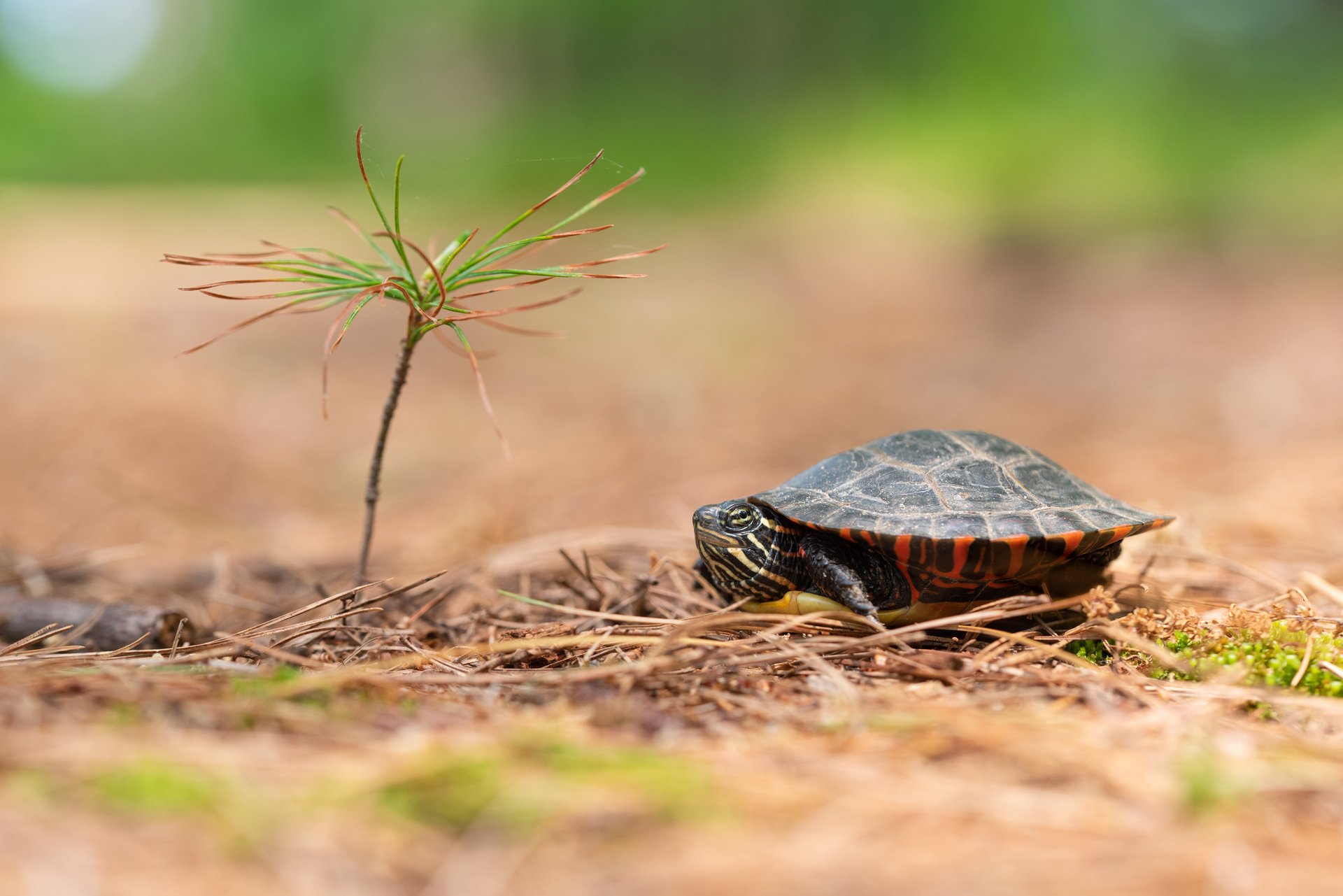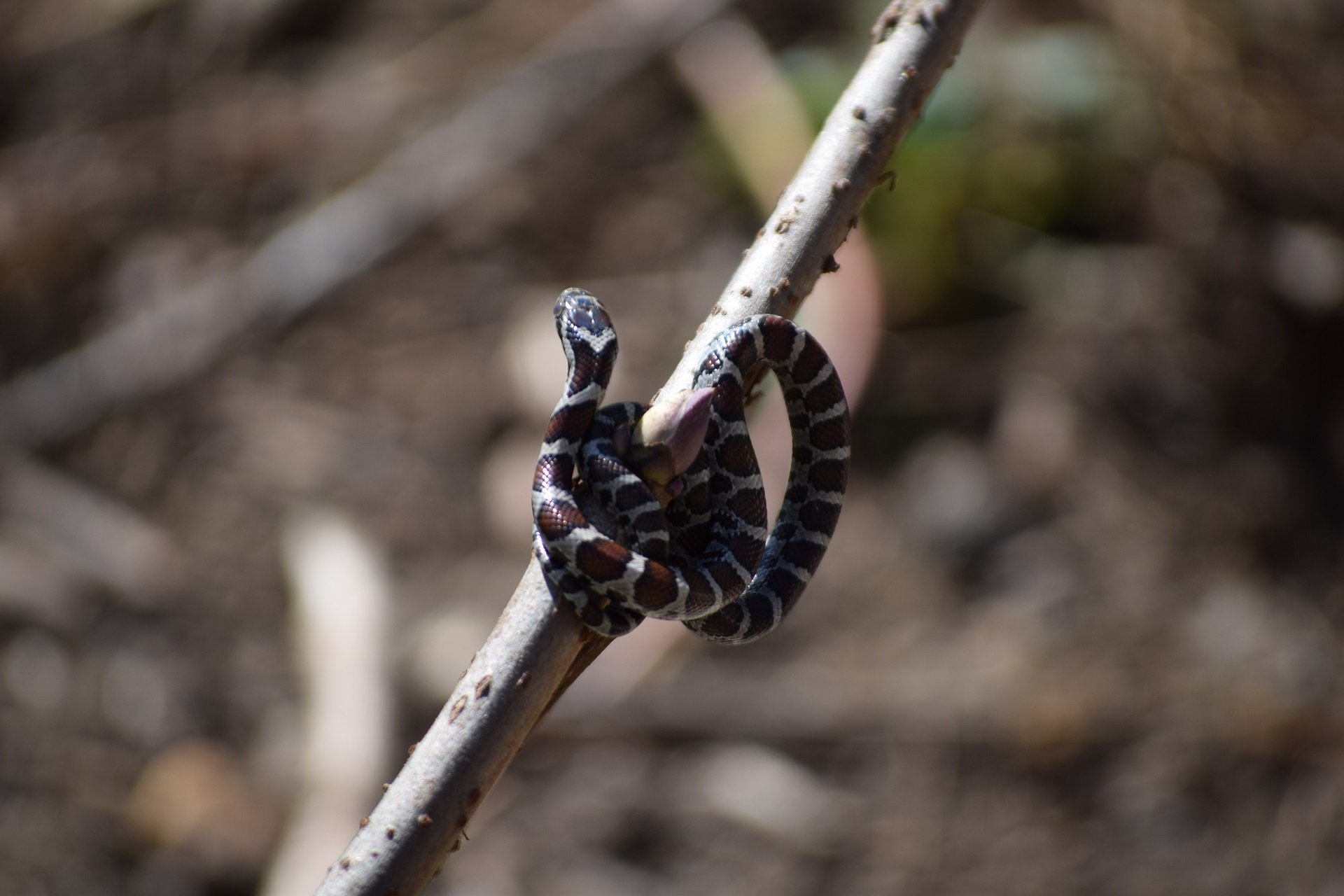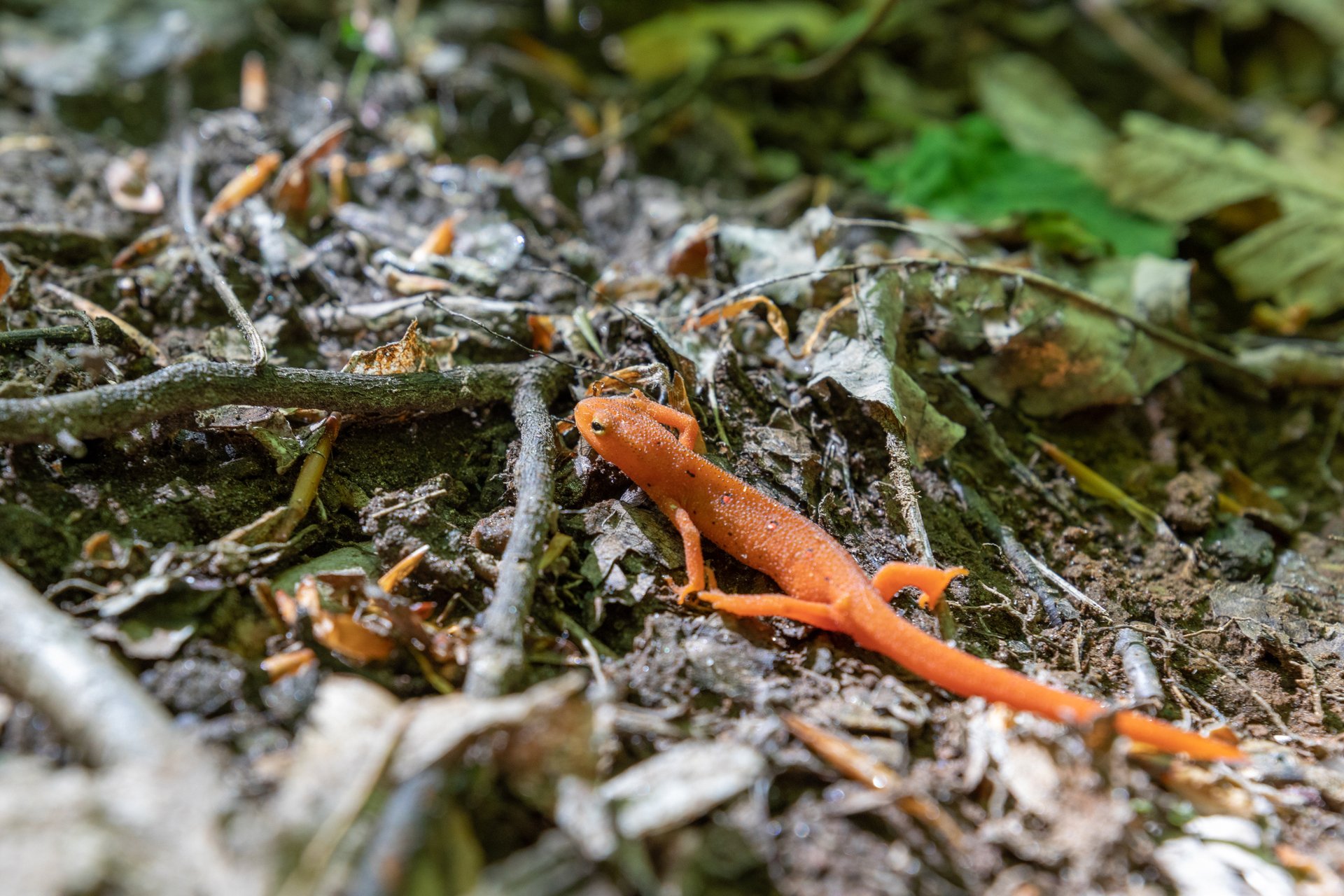Salamanders
Big Night: Amazing Amphibian Migrations in Massachusetts
Picture this: it’s the first warm night of spring with rain falling steadily overhead. While traveling down a forested road, you notice something in your path up ahead. Headlights illuminate dozens of wiggling, scattering creatures reflecting light on the road’s surface—as well as a group of people in raincoats directing traffic around their passage. Welcome to the annual amphibian gathering known as Big Night.
What is Big Night?
Every spring, around March or April, amphibians like the Spotted Salamander, Jefferson Salamander, Wood Frog, and Spring Peeper awaken from their winter slumber. On the early rainy nights, when the temperature is above 40°F, hundreds of thousands of these creatures leave their underground winter burrows and embark on a journey back to their birthplace.
This mass migration marks the annual event known as Big Night. Enthusiasts from across the Northeast flock to witness this extraordinary phenomenon, often stopping traffic to allow these unique creatures to cross roads safely in the pouring rain.
Why Did the Salamander Cross the Road?
Simply put: to get to vernal pools! On Big Night, salamanders and frogs travel to temporary bodies of water that form in our forests during the spring’s snowmelt, known as vernal pools. These pools, vital for amphibian life, dry up by the end of summer, preventing the establishment of fish predator populations.
The amphibians will spend a few days or weeks at the vernal pool courting mates through song and—in the case of salamanders—elaborate courtship dances. From the high-pitched trill of a Spring Peeper to the resonant quacking of the Wood Frog, the males serenade their potential partners. Amphibians engage in this mass courtship ritual, known as congressing, at these temporary bodies of water.
Subsequently, the females lay their eggs in the pools, and the adults return to the forest once this vital task is complete. Before warmer weather dries up the delicate vernal pool, the eggs will hatch, and larvae will grow into fully formed frogs and salamanders which will begin venturing into more permanent bodies of water to live out their adult lives.
Celebrate Big Night
Big Night showcases the amazing instinctual cues that migrating wildlife possess, as well as the importance land use plays in supporting wildlife. For nature and wildlife lovers, it’s an event worth celebrating! Here’s how we recommend making the most of the first rainy night in spring:
Certify a Vernal Pool Near You
Certifying vernal pools ensures that they receive the highest level of protection under the Massachusetts Wetland Protection Act. Certification helps developers plan accordingly and allows conservation commissions to enforce stronger safeguards during the permit review process. Anyone can help certify vernal pools (as wildlife habitat) by gathering information and submitting it to the Massachusetts Natural Heritage and Endangered Species Program. Certify a vernal pool near you
Learn More About Big Night
Explore the intricate web of connections between amphibians, land, and people—and witness the biggest night of the year—by joining a Mass Audubon program near you.
Upcoming Related Programs
See MoreFebruary Vacation Adventure Days
-
Ipswich River Wildlife Sanctuary, Topsfield
-
4 classes starting
Tuesday, February 17
8:30am-3:00pm
Age 7 - 8
February Vacation Adventure Days
-
Ipswich River Wildlife Sanctuary, Topsfield
-
4 classes starting
Tuesday, February 17
8:30am-3:00pm
Age 9 - 12
The Secret Life of Owls, Vernal Pools, and Spring Wildlife
-
Museum of American Bird Art Education Center, Canton
-
Monday, March 9
12:30-2:00pm
Adults
A Nature Year at The Nest at the MABA Education Center: Spring (3 Months)
-
Museum of American Bird Art Education Center, Canton
-
3 classes starting
Wednesday, March 18
10:00am-12:00pm
Adults
Tiny Trekkers - Awesome Amphibians
-
Stony Brook Wildlife Sanctuary, Norfolk
-
Saturday, March 21
10:00-11:30am
Families - children 3 - 6 years
Looking Closely: The Art and Ecology of Wood Frogs, Spotted Salamanders, and Vernal Pools
-
Museum of American Bird Art Education Center, Canton
-
Friday, March 27
10:30am-12:00pm
Adults
Stay Connected
Don't miss a beat on all the ways you can get outdoors, celebrate nature, and get involved.



